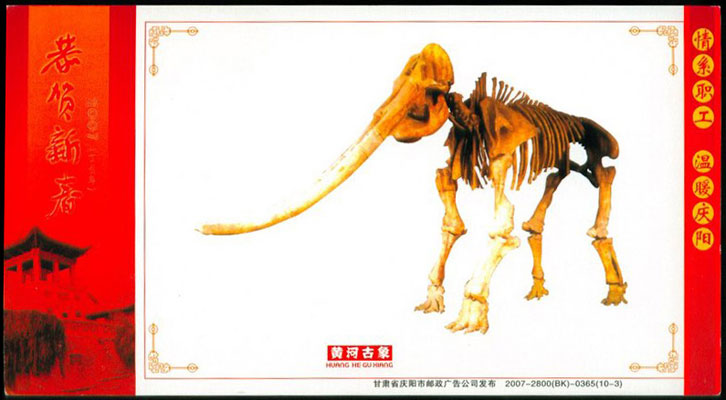
|
БИОЛОГИЯ НА ПОЧТОВЫХ МАРКАХ BIOLOGY ON POSTAGE STAMPS |
БИОЛОГИЧЕСКИЕ МУЗЕИ и ИНСТИТУТЫ - BIOLOGICAL MUSEUMS and INSTITUTES
China (En) - Китай (Ru) - Chine (Fr) - China (De) - China (Sp)
Beijing Museum of Natural History (En) - Бейджингский (Пекинский) музей естественной истории = Пекинский музей естествознания = Пекинский музей естественных наук (Ru) †
(En) Beijing Museum of Natural History grew out
of the preparation department of National Central Museum of Natural History
founded in 1951. Beijing Museum of Natural History was formally named in 1962.
Being the first large-scale museum of natural history founded on our own
strength after new China was established, the museum bears three main functions:
the specimen collection, the academic research and the science popularization of
paleontology, zoology, botany and anthropology. The museum today boasts its rich
collections, high-level research and ever-enlarging exhibitions. It has been one
of a few museums of natural history in China and named as National Youth Science
and Technology Education Base.

[In 1973, several farmers found some pure white ivories when they were digging the sand in Gansu
Province of western China. Hardly had they found it, they reported it to the
local government. Under the guidance of local government, the whole fossil was
dug out completely: It was the skeleton of an elephant, agley inserted in the
sand with foot treading on stones.
This fossil is named as "Yellow River Elephant". It is 4 meters high and 8
meters long. Because the elephant is armed with sword-like ivories as long as 2
meters, so it is also called "Sword-ivory Elephant". Sword-ivory elephants were
spread widely million years ago and their fossils were discovered in foreign
countries as well. This set of skeleton fossil is the most integral one among
all the skeletons of sword-ivory elephant fond around the world.
It is supposed that, 3 million years ago, the Gansu region was not as dry as
present condition and was distributed with rivers and lakes everywhere. One day,
a sword-ivory elephant missed its step and mired down in mud when it was
drinking by the river. With the passing of time, waste accumulation got thicker
and thicker. As a result, its skeleton was completely preserved. Because the
region was uplifted and became high plateau after complicated geologic
succession, the "Yellow River Elephant" was finally released from under earth.
The fossil of "Yellow River Elephant" is not only precious material for research
of ancient geography and geologic climate of Gansu region but also important
harvest of excavation of ancient extinct life in China. Since it is best known
in China, even Chinese teaching material of elementary school contains a piece
of text telling the story of "Yellow River Elephant". The fossil of "Yellow
River Elephant" is on exhibition in the hall of ancient extinct life of Beijing
Nature Museum.
http://www1.chinaculture.org/library/2008-01/07/content_21169.htm]
Ссылки - Links
Официальный сайт (En) http://www.bnhm.cn/web/en/
Начато: 01.07.2008 Обновлено: 11.10.2008